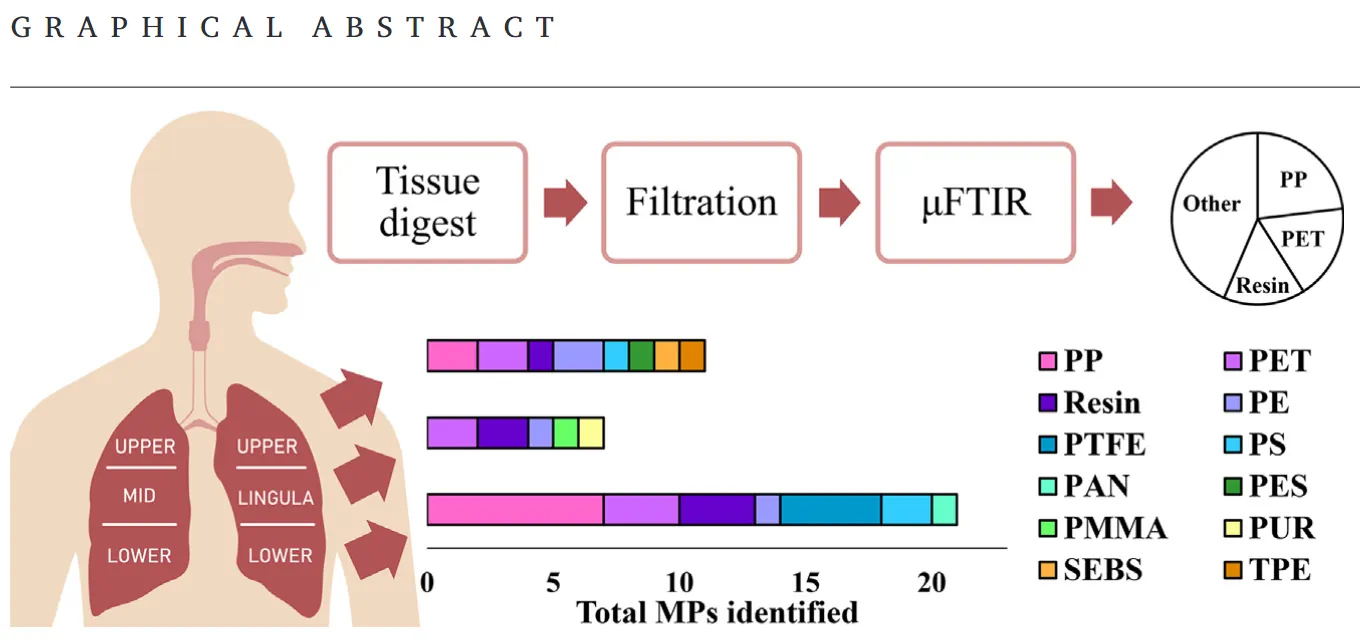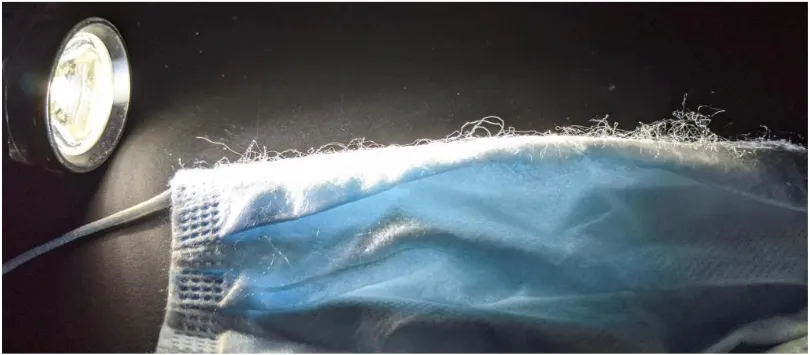UK study finds microplastics, most likely from inhalation, in all regions of human lungs sampled. Did they arrive from masks?

A new UK study from Hull York Medical School sampled human lung tissue using micro-Fourier Transform Infrared spectroscopy. (micro FTIR).
39 kinds of microplastics were identified from 11 of the 13 lung tissue samples of patients who were to undergo surgery. The most commonly found microplastics were polypropylene (PP) 23%, polyethylene terephthalate (PET) 18% and resin 15%. Tissue from male donors contained nearly six times the microplastics of tissue from female donors.
It had been thought that only particles smaller than 3 micrometers (µm) can enter the alveolar region of the lung. However, the particles seen in this study were up to 1410 µm in length = 1.4 mm.
1-s2.0-S0048969722020009-main (1)https://www.sciencedirect.com/science/article/pii/S0048969722020009
What does this have to do with masks?
Possibly nothing. However, the disposable surgical masks that now decorate the world’s beaches and rivers and wildlands after having decorated billions of human faces happen to also be made of polystyrene and polyethylene compounds. But the most common material in these is polypropylene, because of ease of industrial handling. That was the most common microplastic found by the UK researchers in lung tissue samples.
Epidemiologist Boris Borovoy and I were the first that we were aware of to warn in peer-reviewed research of this health hazard from inhaled microplastics and nano-plastics coming from disposable surgical masks.
Mask_Risks_Part1https://pdmj.org/papers/masks_false_safety_and_real_dangers_part1
We also discussed the friable nature of the particulate attached to surgical masks. Here are a few of the photos we took of surgical masks under light microscope, 40 to 100x magnification and without magnification.

Brand new surgical mask fibers, particulate and soiled appearance.

A lightly used hospital face mask. Are all these fibers intact to your satisfaction?
